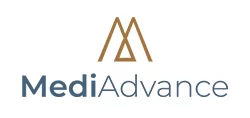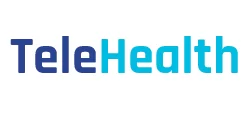Head of Solutions at Med-e-Mass, Dilip Naran, explains why electronic health records (EHRs) is the answer to the unique combination of challenges faced by retirement villages: complex medical care requirements, tech-savvy residents, over-stretched staff, and the juggling act that is service delivery vs cost management.
South Africans aged 60 and over comprise 8.1% of the population, according to Statistics South Africa. By 2050, the ratio is likely to be 15.4%.
As this age group grows, so does its demands for quality retirement accommodation. A far cry from the typical old-age home of yesteryear, middle- to upper-income retirees expect safe, superior accommodation and sophisticated lifestyle amenities. Topping the list in many instances, is expert and specialised medical facilities and care.
EHRs should be an integral part of retirement facilities’ healthcare offering. It is an inescapable fact that elderly people often live with more than one chronic condition and that their care requirements are more complex and demanding than those of younger people. A good EHR system delivers a broad range of benefits, with improved care as the main outcome.
What are EHRs?
EHRs have been in use worldwide for a number of years. In essence, it is an online, or electronic, record of a patient’s medical history. Depending on the sophistication of the system, the record can include more than one medical professional’s clinical notes, test and laboratory results, x-ray images, prescription information, information harvested from health and fitness devices that patients wear, such as smart watches, and the patient’s own observations. For optimal benefit, EHRs should be shared between patients, their care providers and their medical funders – all with the patient’s consent.
Among the advantages of such records are improved communication between providers, the ability to anticipate future health problems, an unambiguous historical record and, importantly, increased patient participation in their own care. When EHRs are used in a community or area, the data captured can be a valuable basis for clinical research and the identification of trends, which could allow for preventative care.
However, a good EHR is much more than a useful clinical record. When used to its full potential, the system should help manage and streamline workflows and through data tracking, analysis and reporting, enable a continuously improving cycle of care.
Why retirement villages need EHRs
The general advantages of an EHR system apply across all settings, but I believe that the benefits for retirement villages are both more far-reaching and specific. Residents of retirement facilities require more complex care than, for instance, the community that visits a suburban GP practice. As a result, the levels of interaction and collaboration with multiple members of the healthcare ecosystem, such as payers, hospitals, hospices, pharmacies and labs, are far higher than the norm. Software that enables this communication and coordination is, in my opinion, a necessity. Furthermore, retirement facilities need to manage and reduce risk, given the relatively vulnerable profile of residents.
On par with the above-mentioned requirements, are staff challenges. Medical facilities in retirement villages are labour intensive operations and staff need all the support they can get to deliver the best care.
The whole opportunity is to use the EHR to create a workflow that allows caregivers more time with the residents. In practice this means, for example, no more searching for paper files, and getting the right information to the right people at the right time to improve diagnosis and decision making. The financial benefit stems from increased compliance, risk mitigating and better relationships with funders, as well as improved medication management, the prevention of adverse drug events (ADEs) and keeping service creep at bay with qualified billing functionalities.
Importantly, EHRs turn data into information. Instead of having 70 charts sitting on a wall, nurses or carers can search a database, pull out data points and locate usable information to improve performance, programmes and outcomes for patients. The ultimate outcome is improved long-term care and fewer hospital re-admissions.
EHR systems are new in South African retirement villages, but a study conducted across multiple old-age facilities in Australia in 2012 showed that care staff members:
- Managed their time more efficiently.
- Found access to information much easier.
- Had more information available to better understand the residents; and
- Delivered better care.
In addition, managers were better able to assess staff performance by using the EHRs.
And if these benefits are not enough to convince retirement villages to adopt the technology, residents are increasingly pushing the issue. The fact is that patients want to be more involved in their care. If you don’t involve them, they will look elsewhere to another facility. Patients are more informed than ever before and are tech savvy – they want to adopt and use technology in all aspects of their life, including their health. People who invest in retirement villages expect state-of-the-art care and technology to be part of the package.
How to choose an EHR system
The system on your shortlist must:
- Meet the standards of good record keeping.
- Assist and enable your workflow, administration, patients and staff.
- Comply with international architecture, communication and security standards.
- Be interoperable. Interoperability refers to the ability of one system to send information without loss of meaning to a second system AND the second system being able to use that information without loss of meaning. It is a critical requirement given the need for your facility to communicate with other providers and with funders.
Once you have confirmed that the above four criteria are in place, ask the following questions:
- What are our short, medium and long-term needs and can this EHR meet these needs?
- Can the EHR help streamline our workflows and reduce costs?
- Will the EHR help create more care time for our staff rather than increasing their administrative burden?
You have to understand why you are implementing a system and go through a proper change management process. Realizing all the benefits depends on taking your staff with you, every step of the way.




















